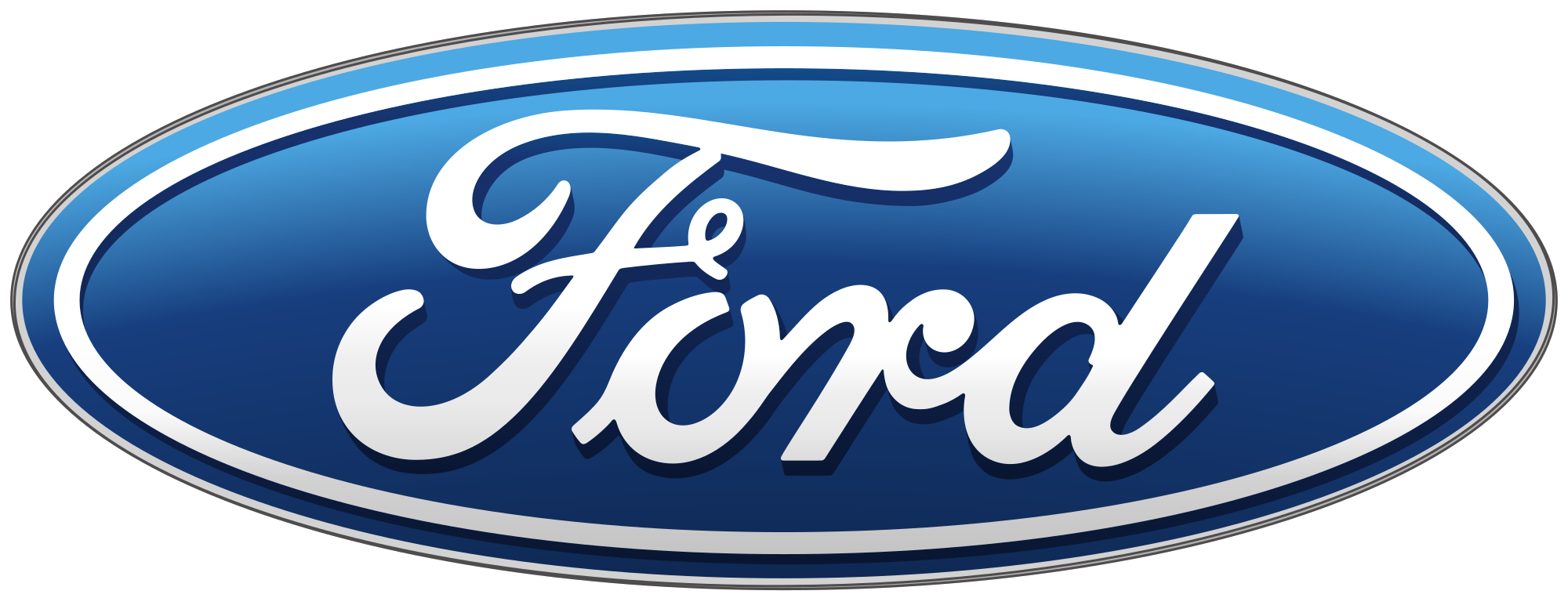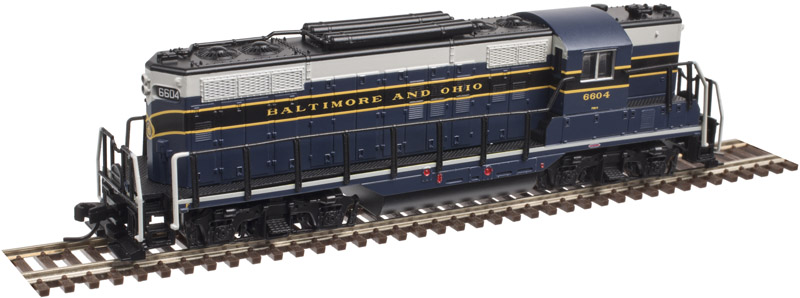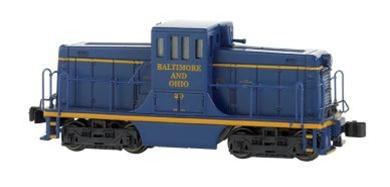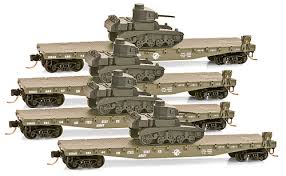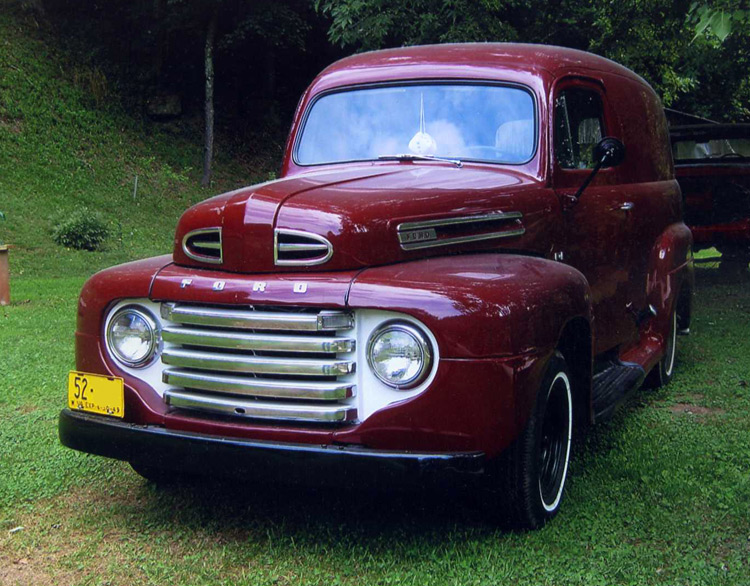Model Information: Introduced in 2019. This is River Point Station's first venture into N Scale. These models feature: Injection molded ABS, Accurate designs and details, Officially licensed, Optional accessory/detail packs, and
Reduced-lustre chrome details.
All models are non-operating, highly detailed, and factory assembled. Models feature precisely molded ABS plastic components, authentic paint, and either painted or reduced-luster plated, simulated-chrome finish grille, bumpers, and wheels, as appropriate. Models include tinted clear window inserts and pre-colored interiors, as well as a detailed chassis. To facilitate interior detailing, major assemblies are held together by friction fit, and may be carefully disassembled.
In December 2020, River Point Station announced that they will leave the N scale market, just after one run, and in April 2021, Atlas announced that they acquired the tooling of the N scale vehicles from River Point Station. A first run of these vehicles under the Atlas brand was announced in October 2021.
All models are non-operating, highly detailed, and factory assembled. Models feature precisely molded ABS plastic components, authentic paint, and either painted or reduced-luster plated, simulated-chrome finish grille, bumpers, and wheels, as appropriate. Models include tinted clear window inserts and pre-colored interiors, as well as a detailed chassis. To facilitate interior detailing, major assemblies are held together by friction fit, and may be carefully disassembled.
In December 2020, River Point Station announced that they will leave the N scale market, just after one run, and in April 2021, Atlas announced that they acquired the tooling of the N scale vehicles from River Point Station. A first run of these vehicles under the Atlas brand was announced in October 2021.
Prototype History: The Ford F-Series is a series of light-duty trucks and medium-duty trucks (Class 2-7) that have been marketed and manufactured by Ford Motor Company since 1948. While most variants of the F-Series trucks are full-size pickup trucks, the F-Series also includes chassis cab trucks (flat bed) and commercial vehicles (box van). The Ford F-Series has been the best-selling vehicle in the United States since 1986 and the best-selling pickup since 1977.
In 1999, to bridge the gap between the pickup line and the medium-duty trucks, the F-250 and F-350 became the Ford Super Duty vehicles; considered an expansion of the F-Series, the Super Duty trucks are built on a distinct chassis with heavier-duty components. As of the 2017 model year, the F-Series includes the F-150, the Super Duty (F-250 through F-550), and F-650 and F-750 Super Duty medium-duty commercial trucks. The most popular version of the F-Series is the F-150, now in its thirteenth generation.
Through the use of rebadging, Ford has marketed the F-Series through all three Ford divisions in North America. From 1946 to 1968, Mercury sold the Mercury M-Series in Canada; during the 2000s, Lincoln sold the Lincoln Blackwood, replaced by the Lincoln Mark LT.
From Wikipedia
In 1999, to bridge the gap between the pickup line and the medium-duty trucks, the F-250 and F-350 became the Ford Super Duty vehicles; considered an expansion of the F-Series, the Super Duty trucks are built on a distinct chassis with heavier-duty components. As of the 2017 model year, the F-Series includes the F-150, the Super Duty (F-250 through F-550), and F-650 and F-750 Super Duty medium-duty commercial trucks. The most popular version of the F-Series is the F-150, now in its thirteenth generation.
Through the use of rebadging, Ford has marketed the F-Series through all three Ford divisions in North America. From 1946 to 1968, Mercury sold the Mercury M-Series in Canada; during the 2000s, Lincoln sold the Lincoln Blackwood, replaced by the Lincoln Mark LT.
From Wikipedia
Road Name History: CSX Transportation (reporting mark CSXT) is a Class I railroad in the United States. The main subsidiary of the CSX Corporation, the railroad is headquartered in Jacksonville, Florida, and owns about 21,000 route miles (34,000 km). CSX operates one of the three Class I railroads serving most of the East Coast, the other two being the Norfolk Southern Railway (NS) and Canadian Pacific Railway. It also serves the Canadian provinces of Ontario and Quebec. Together CSX and Norfolk Southern Railway have a duopoly over all east-west freight rail traffic east of the Mississippi River. As of October 1, 2014 CSX's total public stock value was slightly over $32 billion.
CSX Transportation was formed on November 1, 1980, by combining the railroads of the former Chessie System with Seaboard Coast Line Industries, and finally with the Seaboard System Railroad in 1986. The originator of the Seaboard System was the former Seaboard Air Line Railroad, which previously merged with the Atlantic Coast Line Railroad in 1967, and later with the Louisville & Nashville Railroad, as well as several smaller subsidiaries such as the Clinchfield Railroad, Atlanta & West Point Railroad, Monon Railroad and the Georgia Railroad. The origin of the Chessie System was the former Chesapeake & Ohio Railway, which had merged with the Baltimore & Ohio Railroad, and the Western Maryland Railway.
Read more on Wikipedia.
CSX Transportation was formed on November 1, 1980, by combining the railroads of the former Chessie System with Seaboard Coast Line Industries, and finally with the Seaboard System Railroad in 1986. The originator of the Seaboard System was the former Seaboard Air Line Railroad, which previously merged with the Atlantic Coast Line Railroad in 1967, and later with the Louisville & Nashville Railroad, as well as several smaller subsidiaries such as the Clinchfield Railroad, Atlanta & West Point Railroad, Monon Railroad and the Georgia Railroad. The origin of the Chessie System was the former Chesapeake & Ohio Railway, which had merged with the Baltimore & Ohio Railroad, and the Western Maryland Railway.
Read more on Wikipedia.
Brand/Importer Information: In 1924 Stephan Schaffan, Sr. founded the Atlas Tool Company in Newark, New Jersey. In 1933 his son, Stephan Schaffan, Jr., came to work for his father at the age of sixteen. Steve Jr. built model airplanes as a hobby and frequented a local hobby shop. Being an enterprising young man, he would often ask the owner if there was anything he could do to earn some extra spending money. Tired of listening to his requests, the hobby-store owner threw some model railroad track parts his way and said, "Here, see if you can improve on this".
In those days, railroad modelers had to assemble and build everything from scratch. Steve Jr. created a "switch kit" which sold so well, that the entire family worked on them in the basement at night, while doing business as usual in the machine shop during the day.
Subsequently, Steve Jr. engineered the stapling of rail to fiber track, along with inventing the first practical rail joiner and pre-assembled turnouts and flexible track. All of these products, and more, helped to popularize model railroading and assisted in the creation of a mass-market hobby. The budding entrepreneur quickly outgrew the limitations of a basement and small garage operation. Realizing they could actually make a living selling track and related products, Steve and his father had the first factory built in Hillside, New Jersey at 413 Florence Avenue in 1947. On September 30, 1949, the Atlas Tool Company was officially incorporated as a New Jersey company.
In 1985, Steve was honored posthumously for his inventions by the Model Railroad Industry Association and was inducted into the Model Railroad Industry Hall of Fame in Baltimore, Maryland. In addition, Steve was nominated and entered into the National Model Railroad Association Pioneers of Model Railroading in 1995.
In the early 1990s, the Atlas Tool Company changed its name to Atlas Model Railroad Company, Inc.
In those days, railroad modelers had to assemble and build everything from scratch. Steve Jr. created a "switch kit" which sold so well, that the entire family worked on them in the basement at night, while doing business as usual in the machine shop during the day.
Subsequently, Steve Jr. engineered the stapling of rail to fiber track, along with inventing the first practical rail joiner and pre-assembled turnouts and flexible track. All of these products, and more, helped to popularize model railroading and assisted in the creation of a mass-market hobby. The budding entrepreneur quickly outgrew the limitations of a basement and small garage operation. Realizing they could actually make a living selling track and related products, Steve and his father had the first factory built in Hillside, New Jersey at 413 Florence Avenue in 1947. On September 30, 1949, the Atlas Tool Company was officially incorporated as a New Jersey company.
In 1985, Steve was honored posthumously for his inventions by the Model Railroad Industry Association and was inducted into the Model Railroad Industry Hall of Fame in Baltimore, Maryland. In addition, Steve was nominated and entered into the National Model Railroad Association Pioneers of Model Railroading in 1995.
In the early 1990s, the Atlas Tool Company changed its name to Atlas Model Railroad Company, Inc.
Item created by: CNW400 on 2021-10-06 23:31:27. Last edited by CNW400 on 2022-10-03 09:32:08
If you see errors or missing data in this entry, please feel free to log in and edit it. Anyone with a Gmail account can log in instantly.
If you see errors or missing data in this entry, please feel free to log in and edit it. Anyone with a Gmail account can log in instantly.





